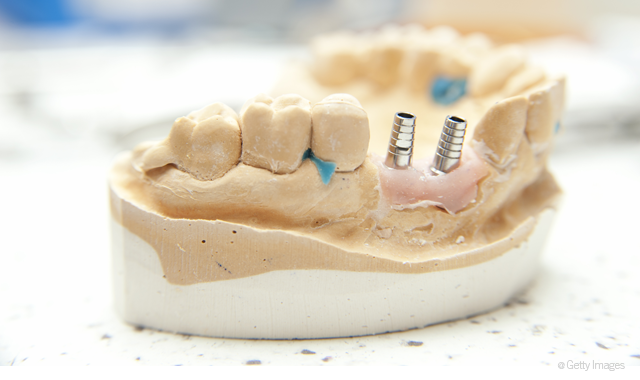10 implant trends you need to know
Dental Lab Products counts down the 10 innovations and industry shifts that are affecting dental implants.

Dental implants are an ever-increasing business opportunity for dental professionals. From custom abutments to surgical guides, there are more and more ways for labs and dentists to get involved in the implant business than ever before.
With that in mind, here are 10 implant trends you need to know:
1. Increase of edentulous patients
By the year 2020, it is estimated that some 38 million adults in the United States will be in need of one or two complete dentures.1
Product roundup: Dental implant systems
2. Continued demand for full-arch restorations
The advent of full-arch restorations fixed to dental implants is a game-changer for many patients. Implant surfaces that accelerate healing times can offer tooth replacement solutions that are rapid, provide immediate function and cause minimal disruption to the patient’s daily life.
3. The decline of cement
Cement-free restorations are beginning to offer patients increased safety and simplicity.
Step-by-step: Kahng on an ideal implant bridge
4. Data as a differentiator
With so many implant options, it’s more important than ever to know the products you’re using are scientifically backed and clinically proven. That means making sure you’re sticking with the same components from the same company or ensuring you’re using approved connections throughout the workflow.
5. Demand for immediate satisfaction
Immediate loading following immediate placement: Patients want teeth now; they don’t want to wait six months for delayed loading.
Next page: New markets and new training options ...
6. Advanced esthetics and ease of use
These topics are perpetual discussion fodder, but new concepts and tooling like angulated screw channels in full-contour solutions bring renewed esthetic and access opportunities.
7. Influx of low end/low cost CAD/CAM abutments
These low end options are not able to maintain the integrity of the implant/abutment interface, leading to restorative screw loosening and breakage, abutment fractures and surgical complications (bone loss around the implants and implant fracture/failure).
Related: Test your dental implants IQ!
8. Reported increase in peri-implantitis cases
This is due to the use of cement-retained crowns, shifting the trend toward screw-retained, implant-supported restorations. Solutions include patient-specific abutments where the restorative margin can be designed for easy access for cement-removal and incorporating a comprehensive offering to meet clinical demands for screw-retained solutions from single units to bridges, bars and fixed cases.
9. Increase of training in virtual reality
As virtual reality tools become more and more accessible via solutions like the Occulus Rift or the HTC Vive, training situations in which labs and clinicians can work on “virtual patients” are more possible than ever.
10. An increasing market
According to the American Academy of Implant Dentistry, the estimated U.S. and European market for dental implants is expected to reach $4.2 billion by 2022, making it a better time than ever for dental professionals to get into this market segment.
Editor’s note: These trends were compiled from information provided by DENTSPLY Implants, Nobel Biocare and Straumann.
1 (Source: Douglass CW, Shih A, Ostry L. Will there be a need for complete dentures in the United States in 2020? J Prosthet Dent. 2002 Jan;87(1):5-8)
Top photo: Photo: Ganay Mutlu / Getty Images